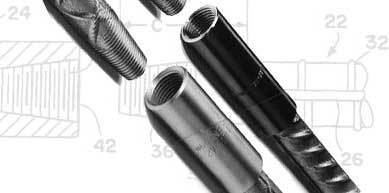 | ||
Mechanical rebar connections, also known as mechanical splices, are used to join lengths of rebar together. Building code requirements for masonry construction now require longer lap lengths for some bar sizes.
These changes mean more congestion in masonry cells and more difficult construction. To alleviate this problem, builders can either use open-cell blocks, which are more expensive, or use mechanical rebar couplers to eliminate the lap. Reinforcing bar coupling has all of the features desirable in a rebar joining system combined with unequalled simplicity of installation. Couplers are designed to splice the same diameter bars where one bar is free to move and can be rotated.
Benefits of using a mechanical rebar connection include:
References
Mechanical connections Wikipedia(Text) CC BY-SA
